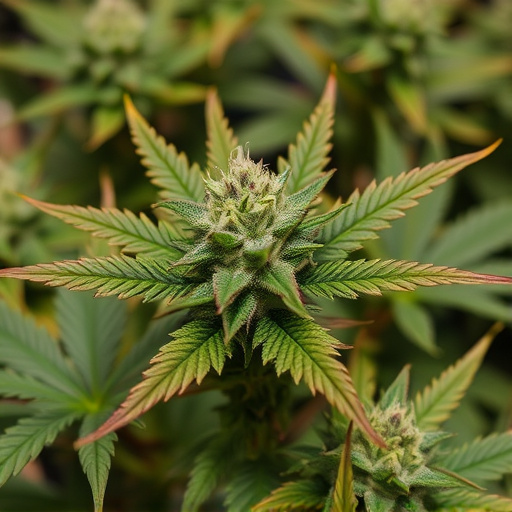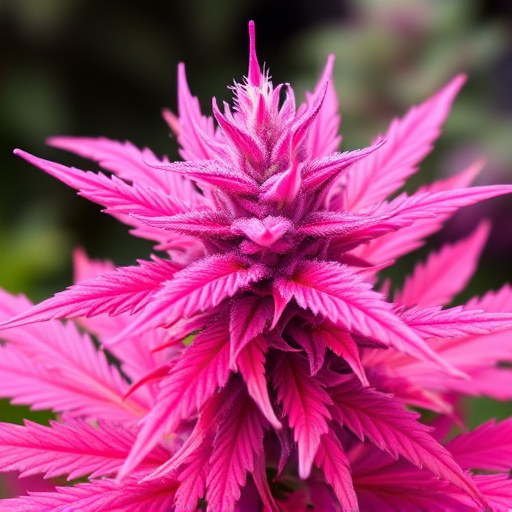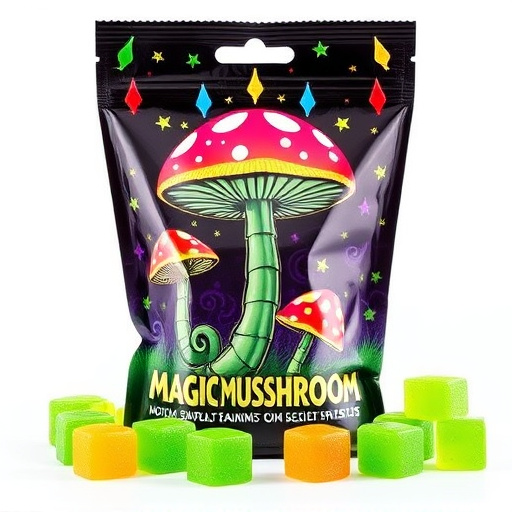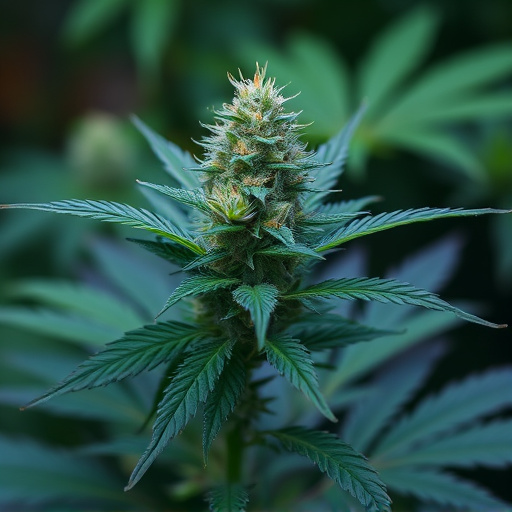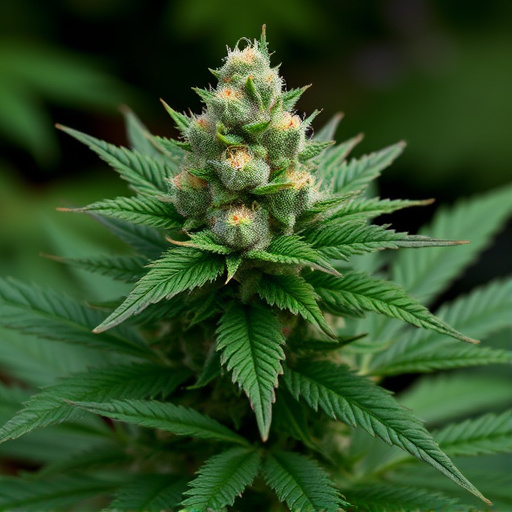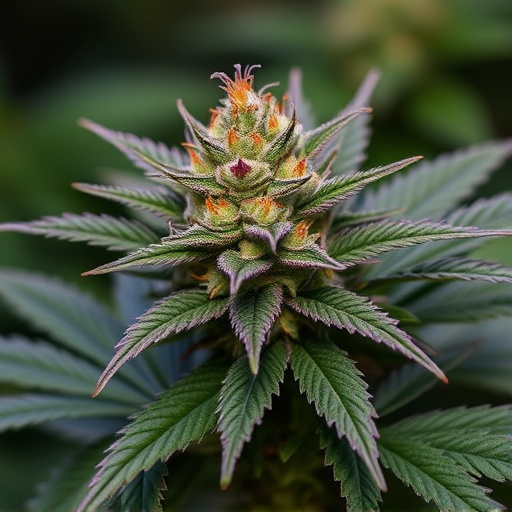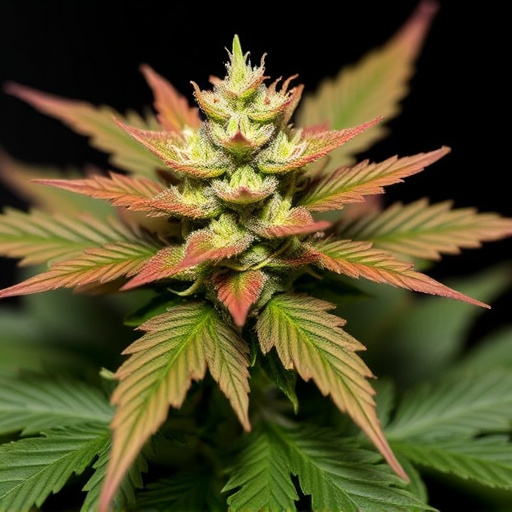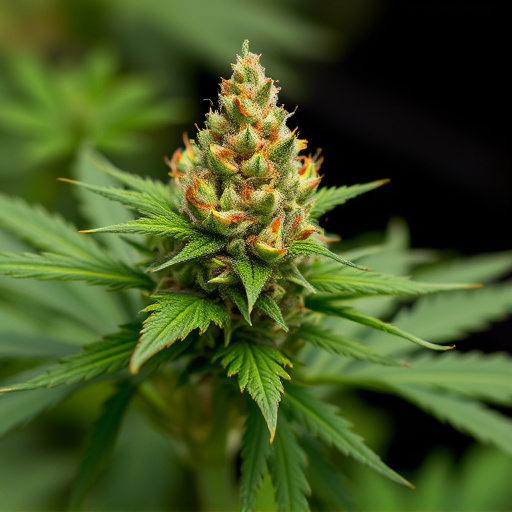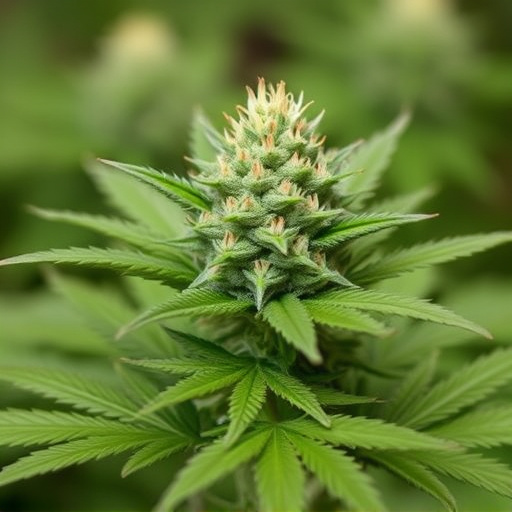Tetrahydrocannabinol (THC) in cannabis interacts with the endocannabinoid system, regulating hunger through its binding to brain receptors and influencing ghrelin. This leads to varying appetite responses, from increased hunger ('munchies') to suppressed hunger. High-THC strains are sought for pain relief, but other cannabinoids like CBD also play a role. Balanced THC and cannabinoid profiles in certain strains offer effective pain management and appetite regulation, with Indica-dominant varieties popular for their relaxing properties and appetite stimulation, while potent Sativa strains enhance well-being by regulating hunger.
“Unraveling the impact of THC on hunger hormones is a fascinating journey into the intricate relationship between cannabis and our bodies. This article explores how tetrahydrocannabinol (THC) interacts with our appetite-regulating systems, offering insights into its potential effects on eating behaviors.
We delve into the science behind cannabinoids’ role in appetite control, revealing their promise in managing hunger, especially for those seeking relief from chronic conditions. Additionally, we guide readers through the best cannabis strains known for their effectiveness in alleviating pain and stimulating appetite.”
- Understanding THC and Its Interaction with Hunger Hormones
- The Role of Cannabinoids in Regulating Appetite
- Best Cannabis Strains for Managing Pain and Hunger
Understanding THC and Its Interaction with Hunger Hormones
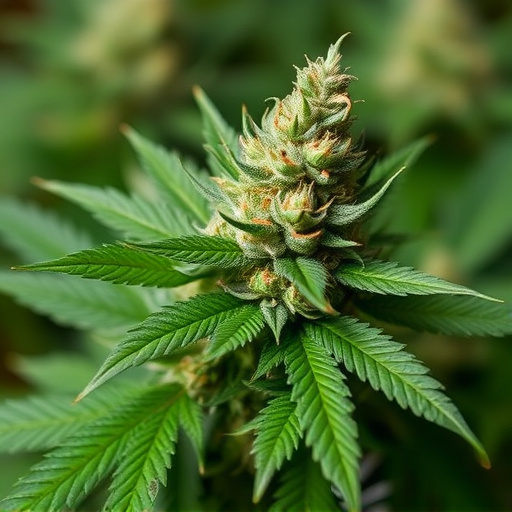
Tetrahydrocannabinol (THC), one of the most well-known compounds in cannabis, has a profound impact on various physiological processes in the human body, including hunger and appetite regulation. When THC enters the bloodstream, it interacts with our endocannabinoid system (ECS), which plays a crucial role in maintaining homeostasis. This system consists of receptors located throughout the body that bind to endocannabinoids, such as anandamide and 2-AG, and when THC mimics these natural compounds, it can significantly alter hunger hormones.
The connection between THC and hunger hormones is complex. Studies suggest that THC influences ghrelin, often referred to as the ‘hunger hormone,’ by binding to specific receptors in the brain. Ghrelin stimulates appetite and promotes food intake, and its levels typically increase before meals. However, THC’s interaction with these receptors can lead to a decrease in ghrelin secretion, resulting in reduced hunger sensations. This effect might explain why some individuals experience increased appetite or ‘munchies’ when consuming cannabis, while others report decreased hunger, especially when using strains known for their high THC content, which are often sought after as the best cannabis strains for pain relief.
The Role of Cannabinoids in Regulating Appetite
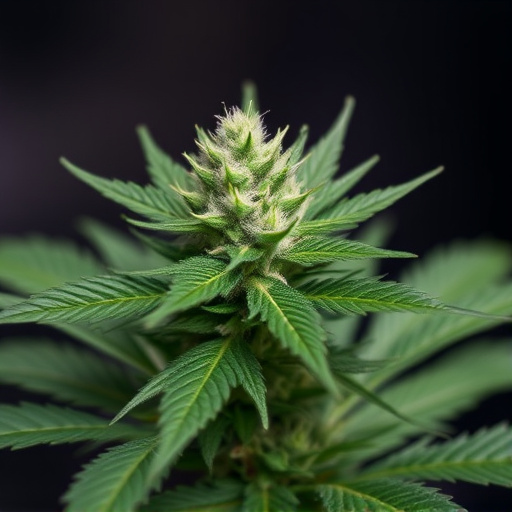
Cannabinoids, the active compounds in cannabis, play a surprising role in regulating appetite and hunger hormones. While THC (tetrahydrocannabinol), the well-known psychoactive compound, is often associated with increased appetite, its effects are complex and multifaceted. Studies have shown that THC can stimulate the release of ghrelin, often referred to as the “hunger hormone,” which signals the brain to induce eating. This effect is particularly notable in individuals experiencing anorexia or other conditions leading to reduced appetite.
However, the story doesn’t end there. Other cannabinoids, like CBD (cannabidiol), have been shown to potentially suppress appetite and reduce food intake. These contrasting effects highlight the nuanced relationship between cannabis and hunger. Additionally, the best cannabis strains for pain, often rich in both THC and CBD, can offer tailored solutions. For instance, high-THC strains may be beneficial for those looking to increase their appetite, while strains with a balanced or higher CBD content could aid in managing excessive hunger or eating disorders.
Best Cannabis Strains for Managing Pain and Hunger
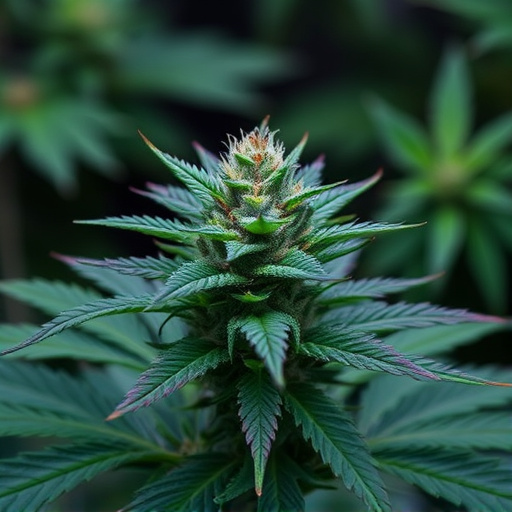
When it comes to managing both pain and hunger, certain cannabis strains have proven effective due to their balanced blend of THC and other cannabinoids. For pain relief, Indica-dominant strains are often recommended as they tend to have higher levels of relaxing and analgesic THC, which can help alleviate physical discomfort. Strains like Blue Dream, Granddaddy Purple, and Gelato are popular choices for their ability to provide a soothing experience while mitigating chronic aches and pains.
Additionally, these strains can stimulate appetite, making them ideal for individuals seeking to combat weight loss or anorexia-related issues. The THC in cannabis interacts with the endocannabinoid system, which plays a crucial role in regulating hunger. Strains such as Pineapple Express, Northern Lights, and Sour Diesel are celebrated for their potent THC content and uplifting, energizing effects, which can stimulate the appetite and enhance overall well-being.
THC’s impact on hunger hormones highlights a fascinating interplay between cannabis and our appetite. By understanding these interactions, we can explore the potential of best cannabis strains for managing both pain and hunger. Certain strains, known for their balanced profiles, offer promise in mitigating discomfort while regulating food intake, providing a natural approach to wellness.
